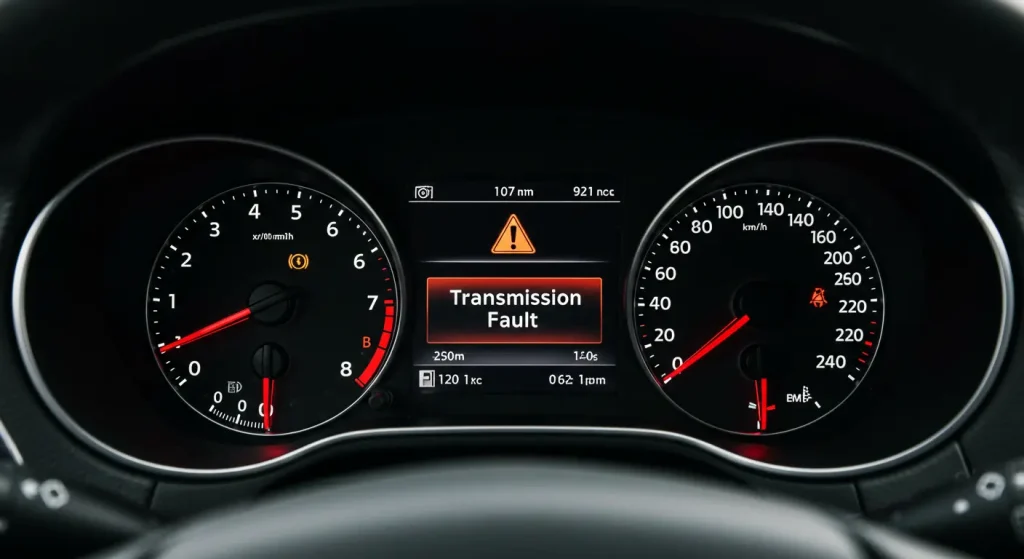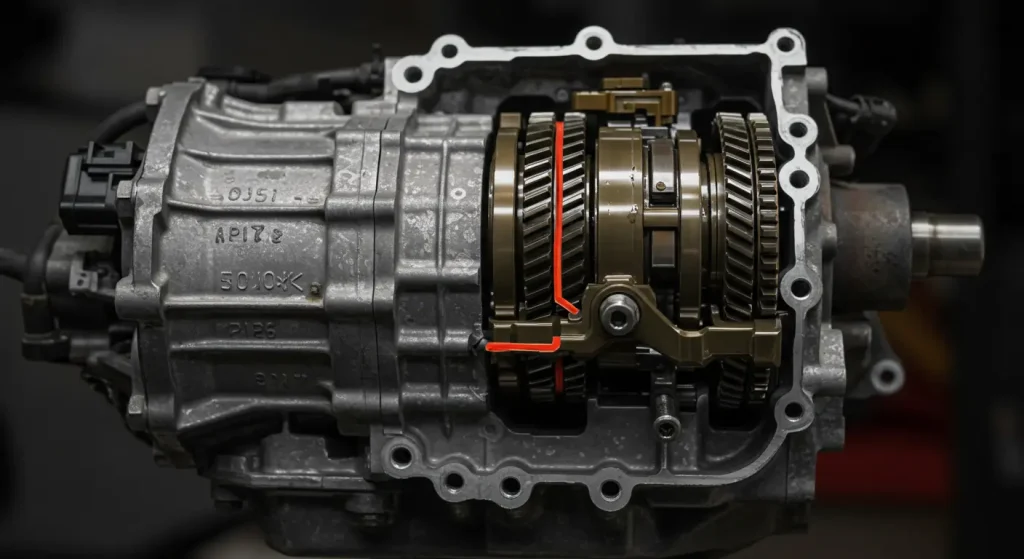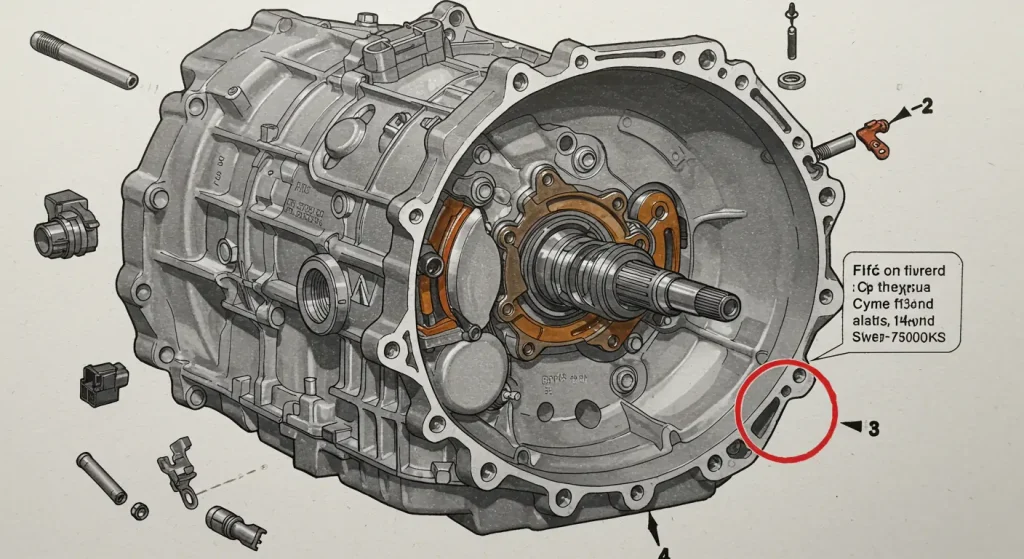Transmission Fault Service Now – Here’s What You Should Do
A “Transmission Fault Service Now” notification on your car indicates a problem with your vehicle’s transmission system. This message flashes on the dashboard when the vehicle’s computer senses a problem.
It is important to stop driving and check the transmission fluid or to visit a professional immediately. This article will tell you what to do in case you face the transmission fault service now notification on your dashboard.

What Is Transmission Fault Service Now Ford Focus?
The “Transmission Fault Service Now” warning on Ford cars shows that the computer has detected a problem with the transmission system. This message comes on the dashboard when there is a problem with the transmission fluid, sensor failures, or mechanical faults.
In some situations, it could be a small problem, such as a malfunctioning sensor, but it could also suggest a major transmission failure. Ignoring this warning can result in serious damage and expensive repairs. It’s important to detect the problem quickly by checking the transmission fluid or contacting a Ford service center.
Common Causes of Transmission Fault Warning in Ford Vehicles
Here are some of the major reasons that you are facing the transmission fault warning:
- Dirty or Low Transmission Fluid: This results in overheating and slow gear shifting because of decreased lubrication and cooling effectiveness.
- Overheating Transmission: Heavy towing or stale fluid can increase temperatures which sends the alert to avoid damage.
- PowerShift Dual-Clutch Transmission Problems: Certain Ford cars such as the Fiesta and Focus, suffer from clutch and shifting issues caused by actuator or control module malfunctions.
- Sensor or Software Malfunctions: Malfunctioning sensors or software errors may provide the ECU with inaccurate information, creating false warnings or shifting problems.
- Solenoid Problems: Faulty or clogged solenoids interfere with fluid regulation, resulting in slipping or limp mode engagement.
- Torque Converter Malfunction: A malfunctioning torque converter causes poor acceleration or failure to shift gears effectively.
- Internal Transmission Damage: Faulty worn-out gears or bearings produce grinding sounds or fluid leaks.
- Transmission Control Module (TCM) Malfunction: A malfunctioning TCM distorts shift patterns and can place the vehicle in limp mode which requires a reset or replacement.
Is It Okay to Drive With Transmission Fault Service Now
Driving with the transmission fault service now Ford Escape warning light is unsafe because it shows a major problem with the transmission system. Ignoring this warning can cause gear sliding, loss of power, or even complete transmission failure while driving.
In some situations, the car can enter limp mode which limits speed and gear movements to prevent further damage. Continuing to drive can worsen the condition and require expensive repairs or a whole transmission replacement. If this warning displays, pull over carefully and get expert assistance immediately to prevent further damage.
Steps to Take When You See This Warning
If your Ford vehicle displays the “Transmission Fault Service Now” notice, take urgent action to avoid further damage. Follow these steps to diagnose and solve the problem:

Pull Over and Shut Off the Engine
First, pull over after seeing the “Transmission Fault Service Now” warning to prevent further transmission damage. Driving with this light can lead to overheating or full transmission failure. Shutting off the engine will cool down the system and possibly avoid further damage before inspection.
Inspect the Transmission Fluid Level and Quality
Transmission fluid is important in keeping the gears lubricated and preventing overheating. If the fluid level is too low, the transmission can struggle to shift properly and cause jerky movements or delayed acceleration. Checking the fluid’s color and consistency can also indicate problems. Burnt or dark fluid suggests contamination and may require a fluid change to restore smooth operation.
Restart the Vehicle to See if the Warning Disappears
After letting the engine cool, restart the vehicle to see whether the warning light disappears. Temporary overheating or a slight sensor malfunction can have caused the alert to pop up, and simply restarting can reset the system. But if it comes right back on after restarting the vehicle, chances are there is an underlying problem that has to be diagnosed.
Scan for Error Codes using an OBD-II Scanner
A diagnostic scan tool (an OBD-II scanner) can be used to identify the specific problem behind the transmission warning. It pulls up transmission-related error codes, including issues with sensors or fluid pressure. Knowing these codes can help you better understand the issue and whether it can be resolved through a software reset or requires much transmission work.
Do Not Drive if You Observe Severe Symptoms
If your Ford car is developing other signs, such as trouble shifting gears or power loss, it is advisable not to drive further. Such signs indicate that the transmission is already facing great stress and further usage can lead to mechanical damage. Rather than taking the risk of an expensive repair or complete transmission failure, have the car towed to a service center for an inspection.
Visit a Ford Dealership or Mechanic
If the warning continues, have your car taken to a qualified Ford dealership or a reputable transmission mechanic. Ford mechanics have advanced diagnostic equipment that can identify software problems or worsening mechanical parts within the transmission system. Fixing the issue early with professional assistance can avoid costly and more serious repairs.
Use a Transmission Fluid Change or Repair
Based on the diagnosis, a transmission fluid change can be enough to fix the problem. Nevertheless, if there is a defective solenoid or a dysfunctional transmission control module (TCM), additional repairs will be needed. If internal parts of the transmission are damaged, replacing the transmission will be needed to restore the vehicle’s proper performance.
Consider Performing a Software Update or Reset.
Modern Ford cars use software to regulate transmission functions, and faults can result in the “Transmission Fault Service Now” alert. A software update or reset can resolve minor sensor faults or shifting concerns. If the problem persists, visiting a Ford dealership for an official upgrade can help restore appropriate transmission operation.
Which Car Brands Have the Most Transmission Fault Issues?
Some car brands are known for having more transmission problems than others due to design defects or faulty software. Here are some of the most common car brands with transmission faults:

- Ford: Models with PowerShift dual-clutch gearboxes often show sliding, reluctance, and premature failure.
- Nissan: Nissan cars with CVT (Continuously Variable Transmission) experience overheating, jerky acceleration, and usual failures.
- Jeep/Chrysler: Many cars with 9-speed automatic transmissions experience harsh shifting and dependability issues.
- Honda: Transmission breakdowns occur in some earlier models, including the Odyssey and Accord, due to weak internal components.
- General Motors (GM): Certain Chevrolet and GMC models have experienced transmission sliding and unexpected failure.
Conclusion
The “Transmission Fault Service Now” notification in Ford cars should never be ignored because it shows a big problem with the transmission system. Low fluid, defective sensors, and internal damage can all result in expensive repairs if not treated quickly.
You should always get regular maintenance and software upgrades to help avoid these problems. If the warning light displays, it is advisable to diagnose the problem quickly and get professional assistance to keep your Ford running smoothly and safely.
FAQs
How Do You Fix a Transmission Fault?
Some transmission problems can be resolved by a simple in-vehicle repair or software update. However, if the transmission has failed internally, it must be rebuilt or replaced.
Can I Drive With a Transmission Fault?
No! If you suspect you have a defective transmission, the only thing you should do is visit your local repair shop right away.
How Much Is a Transmission Fault?
Transmission repair expenses vary from $300 to $1,400. For example, if your manual transmission needs a new clutch, you will expect to pay between $800 and $1,500.